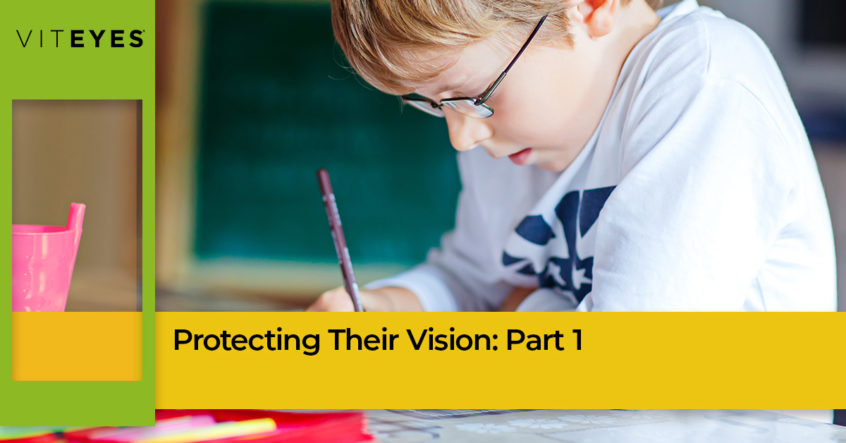Your children may be watching more television than you did at their age, and that’s okay! In 2020, digital media has consumed nearly every platform and drives the educational and entertainment industries. Think about how many screens you look at during the day compared to what you may have when you were their age — computer screens, smartphones, tablets, digital monitors at stores. Even books and magazines in waiting rooms have been replaced by digital monitors, phone calls have been replaced by texting and video chats, tellers and cashiers have been replaced by DIY screens, and we keep an eye on our kids through monitors. Screen time is unavoidable and you have no reason to feel parental guilt for your child spending more time looking at a screen. You can, however, help protect their vision while they engage with technology. Join us in today’s post as we explore some things you, as a parent, can do to protect your child’s developing eyes and instill good habits.
Set the Example
We can bet this is a tip in every parenting advice article you read, and it really can’t be beaten! Your children learn by watching and the one they want to emulate is you. Children do not do what you tell them to do, they do what you show them to do — a classic monkey see, monkey do situation. If you want to instill healthy screen time habits in your child, you have to practice them yourself. In this case that will help protect your eyes and vision too!
Set Screen Time Limits and Boundaries
The foundation of any healthy habit is establishing boundaries and practicing moderation. If your child uses technology for school — especially homeschooled children — it can be difficult to limit screen time as much as you’d like. However, even the best digital blue light exposure reasons should have limits. Children should take frequent breaks from the screen and spend plenty of time reading traditional paper books and playing outside. If your child does not get much educational screen time, it may be more okay to permit entertainment screen time including television, tablet, or video game time. We recommend setting timers to enforce breaks and reduce eye strain and fatigue.
Setting media-free times can be great for the entire family — both for vision and bonding! Set aside some time each day, like right after school or dinner, and ideally before bedtime to turn off the screens and spend time together talking, doing chores, or playing games. Turning off the screens forces vision breaks and human connection can help stimulate endorphins and promote physical activity. Shutting off screens before bedtime helps to support the natural circadian rhythm and will help you and your kids fall asleep quicker and easier, leading to better-rested eyes (and body and brain!).
If you are worried about your child’s vision and eye health in a digital age, we applaud your parenting efforts and are here to support you. Tune in to part two of this two-part series where we will discuss some more tips to protecting your child’s vision while navigating technology. And, in the meantime, visit us online to discover our Blue Light Defender™ Kids eye supplements.
